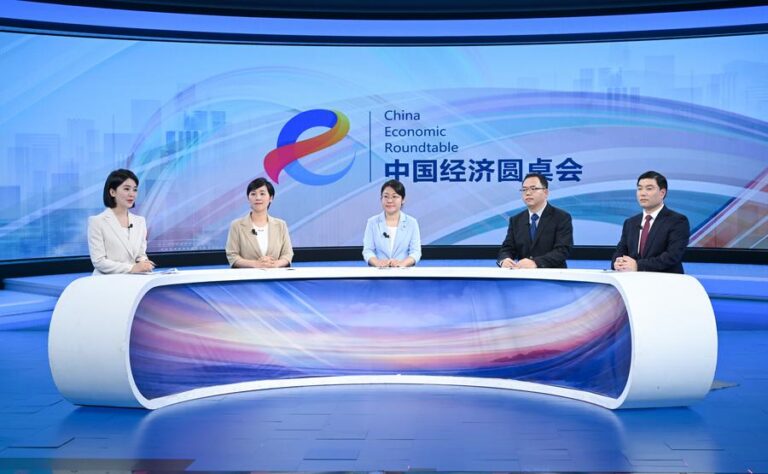* China’s Hainan Free Trade Port (FTP) is set to launch an island-wide independent customs operation on Dec. 18, 2025, underscoring the country’s wider push for high-standard opening up.
* Hainan’s opening up is not merely about lifting restrictions, but about systematically building an institutional framework to ensure the free and efficient flow of people, goods and capital.
* These initiatives will not only drive the island’s high-quality development, but also provide a testing ground for broader national reform and opening up, sending a clear message to the world that China’s commitment to high-level openness is unwavering, and that its doors will continue to open wider.
BEIJING, Aug. 8 (Xinhua) — China’s Hainan Free Trade Port (FTP) is set to launch an island-wide independent customs operation on Dec. 18, 2025, underscoring the country’s wider push for high-standard opening up.
In the latest episode of China Economic Roundtable, an all-media talk show hosted by Xinhua News Agency, senior officials from China’s key economic departments shared policy insights on the Hainan FTP and its role in advancing the country’s evolving opening-up strategy.
As China’s largest special economic zone, Hainan holds unique advantages in serving as a testing ground for reform and opening up. In April 2018, China announced plans to transform the island into a pilot free trade zone, with a long-term vision of developing a free trade port with Chinese characteristics. A master plan released in 2020 aimed to make Hainan a globally influential hub for high-level openness by mid-century.
“The launch of the island-wide independent customs operation will give Hainan greater latitude to pilot higher-standard opening-up measures,” said Cai Ping, an official with the National Development and Reform Commission (NDRC).
These initiatives will not only drive the island’s high-quality development, but also provide a testing ground for broader national reform and opening up, sending a clear message to the world that China’s commitment to high-level openness is unwavering, and that its doors will continue to open wider, Cai said.
ZERO-TARIFF INCENTIVES
“The move is aimed at expanding opening up and accelerating development,” said Cai, emphasizing that Hainan’s opening up is not merely about lifting restrictions, but about systematically building an institutional framework to ensure the free and efficient flow of people, goods and capital.
A central pillar of the policy framework is the enhanced zero-tariff policy. “Businesses will enjoy broader zero-tariff incentives,” said Wu Jingfang, an official with the Ministry of Finance.
The proportion of tariff lines with zero-tariff products in the Hainan FTP will increase from 21 percent to 74 percent, while the number of tariff-free items in Hainan will increase from about 1,900 to around 6,600.
Imported products that undergo at least 30 percent value-added processing in Hainan can enter the mainland tariff-free. In addition, certain goods currently banned or restricted nationwide will enjoy open policies in Hainan.
These measures will further reduce business costs, help attract upstream and downstream enterprises to Hainan, and promote the clustered development of industrial chains, according to Wu.
With a zero-tariff system fundamentally in place after the independent customs operation, high-quality global resources can flow into Hainan with greater freedom and efficiency, Wu said.
Trade liberalization and facilitation are defining features of a free trade port. Jiang Zijun from the Ministry of Commerce stressed that a key focus of the FTP’s trade policies is the adoption of more favorable zero-tariff measures, alongside more relaxed trade management rules.
LONG-TERM ENDEAVOR FOR OPENING UP
Experts believe that launching an unprecedented, island-wide independent customs operation is a complex undertaking with no ready-made blueprint.
It is a “complex and systemic project” that requires careful alignment in policy transition, risk management, and regulatory coordination, said Cai from the NDRC.
Looking ahead, the Hainan FTP will prioritize promoting the free and efficient flow of key production factors, including trade, investment, cross-border capital, personnel and logistics, alongside the secure and orderly movement of data, according to Cai.
In response to the evolving needs of the Hainan FTP and China’s wider push for opening up, the Ministry of Finance will continue to advance tax system reforms, Wu said. Key priorities will include advancing preferential corporate and personal income tax policies to attract top talent and leading enterprises, as well as expanding the list of zero-tariff products.
With its optimized business environment, Hainan has emerged as a premier foreign investment destination, ranking among China’s top performers.
From 2020 to 2024, Hainan attracted more foreign investment than it did in the entire 32 years since becoming a province, while its goods trade grew at an average annual rate of over 30 percent.
Amid rising protectionism and mounting challenges to the global trade order, the planned launch of the island-wide independent customs operation in Hainan — along with phased steps to build a policy and institutional framework for a free trade port with the highest level of openness — marks a strong signal of China’s commitment to deeper opening up and advancing economic globalization, according to Guo Da, executive director of the China Institute for Reform and Development.
The Ministry of Commerce will make more efforts to support Hainan in aligning with high-standard international economic and trade rules, enhancing institutional openness, and fostering new growth drivers through targeted measures, Jiang said.
“With the independent customs operations, Hainan FTP is poised to become a key gateway for China’s new era of opening up and innovation,” Cai added. ■

